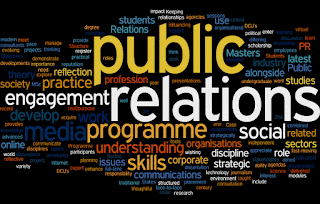Once a rough draft for an article or press release is finished, the writer should try to set it aside for at least a day and come back to the paper with a fresh mind, this strategy makes editing easy and is helpful in spotting errors.
Here are a few strategies that could aid that process
1: Read the Paper out loud
In the course of editing if the paper is read aloud slowly, two senses--seeing and hearing--work in tandem. In essence, what one sense misses, the other may pick up.
2: Check the Thesis Statement and Organization
While editing it's important that the writer writes down the thesis on a piece of paper if it is not directly stated in the essay or article. This is with a view to determine if it accurately states the main idea? Is it in fact supported by the paper?
Does it need to be changed in any way? The piece of paper which serves as the guide should also state the main idea of each paragraph under the thesis statement.
Editing also entails that the PR practitioner analyze each paragraph to determine if it’s relevant to the thesis. It’s important the paragraphs converge in a logical sequence and order.
The writer of the public relations material should remember that he or she is writing for others. No matter how familiar others may be with the material, they cannot get inside the mind of the writer and understand his or her approach to it.
Consequently, the writer has to express himself clearly. As a result, it's useful for the public relations practitioner to read the paper through once, as he keeps in mind whether or not the student or teacher or friend who will be reading it will understand the message.
This brings the following questions: Has the writer said exactly what he wanted to say?
Does the story's development have sufficient details? Is the logic valid?
Are the major points in the story connected?
Are the relationships between them expressed clearly?
Do they all relate to the thesis?
REVIEWING THE STORY'S DICTION
In the course of editing i
t's important that the writer of a story remember that others are reading the story. He should also understand that even the choice of one word can affect the response of readers. The public relations practitioner should anticipate their response and choose the words in the story accordingly.
BELOW IS AN EXAMPLE TO BUTTRESS THIS POINT
Original:
The media's exploitation of the Watergate scandal showed how biased it was already.
Revision version:
The media's coverage of the Watergate scandal suggests that perhaps those in the media had already determined Nixon’s guilt.
In addition to being more specific, the revision does not force the reader to defend the media. In the first example, though the statement is so exaggerated that even the reader who is neutral on the issue may feel it necessary to defend the media. Thus, the writer of the original has made his job of persuading the reader that much harder.



